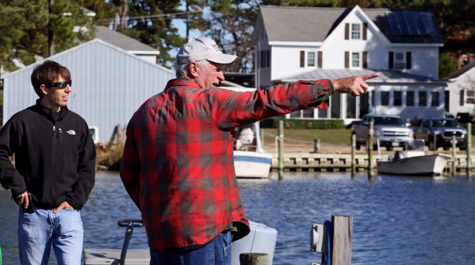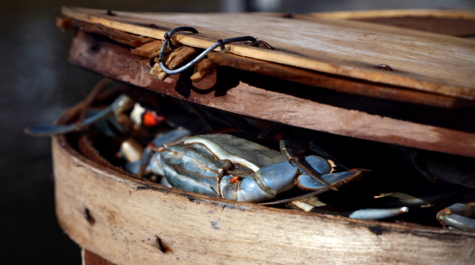VIMS survey reveals crabbers’ preferences for managing derelict gear
Findings can inform fishery managers and policymakers
A survey of Virginia crabbers reveals their perceptions of derelict crab pots and the activities most preferred to help mitigate the issues posed by these “ghost pots” in the Chesapeake Bay.
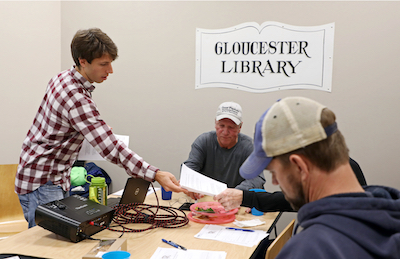
The survey was conducted by a team of researchers at the Virginia Institute of Marine Science, in close collaboration with Virginia watermen. They published an analysis of the survey results in the October 2021 issue of Marine Policy and have also shared the results with the commercial crabbing community in Virginia.
Derelict crab pots are those that have been lost, abandoned, or otherwise discarded in the water. Recent estimates from the Chesapeake Bay suggest that 12-20% of licensed pots become derelict each year, with around 145,000 derelict pots present in the Bay at any given time. Scientific studies show that each derelict pot may trap and kill 16-26 blue crabs annually, and that derelict pots can reduce blue crab harvests by as much as 30% by competing with actively fished gear. Crabbers also incur the cost of replacing their lost gear.
James DelBene, who conducted the survey for his master’s thesis in William & Mary’s School of Marine Science at VIMS, says “Our goal with the survey was to improve management decisions by accounting for the perspectives and preferences of watermen.”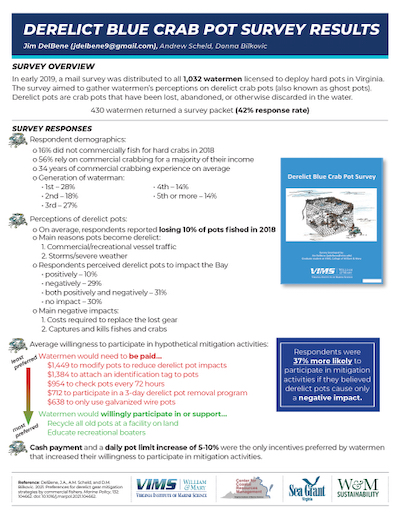
Joining DelBene on the research team were VIMS professors Andrew Scheld and Donna Bilkovic. DelBene was also mentored on the project by J.C. Hudgins, a lifelong crabber and president of the Virginia Watermen’s Association.
"I think the process worked well,” says Hudgins, “it was an opportunity to reach out to most all the watermen in Virginia and get their input and thoughts on the derelict crab pot situation, and what we could do about it. Jim put in a lot of time and effort and should be commended for his work.”
 The researchers developed the survey with input from two focus groups of watermen—hailing from Virginia’s eastern and western Bay shorelines—to accurately represent the different habitats and crabbing practices in these areas. Dan Knott, vice president of the Virginia Watermen’s Association and a focus group participant, says, “This survey is a great demonstration of how watermen can actively participate in areas of scientific study and provide critical feedback based on countless hours of working on the water.”
The researchers developed the survey with input from two focus groups of watermen—hailing from Virginia’s eastern and western Bay shorelines—to accurately represent the different habitats and crabbing practices in these areas. Dan Knott, vice president of the Virginia Watermen’s Association and a focus group participant, says, “This survey is a great demonstration of how watermen can actively participate in areas of scientific study and provide critical feedback based on countless hours of working on the water.”
Prior to the commercial crabbing season in 2019, the researchers mailed the survey to all 1,032 watermen licensed to deploy hard pots in Virginia. “Our objectives,” says DelBene, “were to identify crabbers’ perceptions of derelict pots, measure their willingness to participate in activities to mitigate negative effects caused by derelict pots, and examine the effectiveness of monetary and non-monetary incentives to influence willingness to participate.”
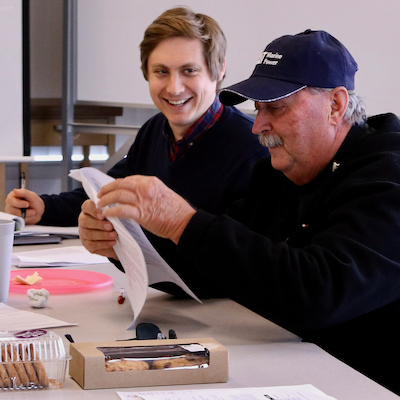 The survey—formally known as a stated preference survey—asked 28 questions across two parts, with a blank page to provide additional thoughts or comments. The first part captured the respondent’s crabbing activity, thoughts concerning derelict pots, and demographic information. The second part used multiple-choice questions featuring a pair of hypothetical scenarios each offering a mitigation measure potentially matched with incentives, and a third choice for maintaining the status quo.
The survey—formally known as a stated preference survey—asked 28 questions across two parts, with a blank page to provide additional thoughts or comments. The first part captured the respondent’s crabbing activity, thoughts concerning derelict pots, and demographic information. The second part used multiple-choice questions featuring a pair of hypothetical scenarios each offering a mitigation measure potentially matched with incentives, and a third choice for maintaining the status quo.
Survey results
In all, 430 of Virginia’s 1,032 licensed commercial crabbers returned a survey packet, for a 42% response rate. Respondents reported having 34 years of commercial crabbing experience on average, with slightly more than half (56%) relying on commercial crabbing for a majority of their income. On average, respondents reported losing 10% of pots fished in the previous year, citing vessel traffic and severe weather as the main reasons pots become derelict.
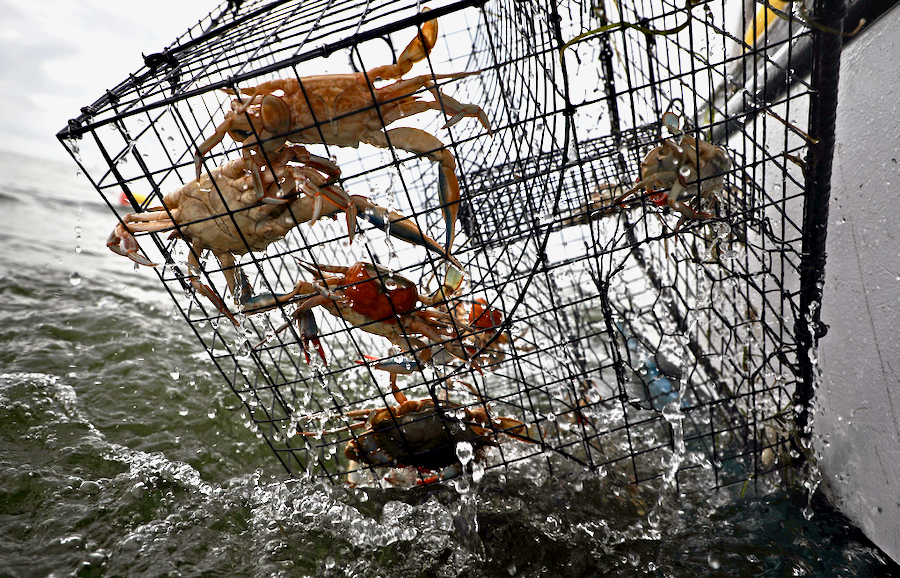 The survey showed diverse responses (pdf) regarding the perceived impacts of derelict pots, as well as the willingness of crabbers to participate in or support mitigation activities. Overall, 10% of respondents perceived derelict pots to impact the Bay positively, 30% perceived no impact, 29% perceived a negative impact, and 31% perceived both positive and negative impacts. The two main negative impacts identified were the costs required to replace the lost gear and that derelict pots capture and kill fishes and crabs. Some respondents included comments describing positive impacts as derelict pots provide a refuge that allows small crabs and fish to hide from predators and may serve as an “artificial reef.”
The survey showed diverse responses (pdf) regarding the perceived impacts of derelict pots, as well as the willingness of crabbers to participate in or support mitigation activities. Overall, 10% of respondents perceived derelict pots to impact the Bay positively, 30% perceived no impact, 29% perceived a negative impact, and 31% perceived both positive and negative impacts. The two main negative impacts identified were the costs required to replace the lost gear and that derelict pots capture and kill fishes and crabs. Some respondents included comments describing positive impacts as derelict pots provide a refuge that allows small crabs and fish to hide from predators and may serve as an “artificial reef.”
Crabbers’ perceptions of the impacts of derelict pots significantly affected their willingness to participate in mitigation activities. “Willingness to participate in most mitigation activities was low and non-monetary management incentives were generally ineffective in offsetting perceived costs for the average respondent,” says DelBene, “however, respondents were 37% more likely to participate in mitigation activities if they believed derelict pots cause only negative impacts.”
The two activities crabbers were willing to participate in or support without any incentives were recycling old pots at a facility on land and education of recreational boaters on best practices to avoid crab pot buoys and lines. “These activities would receive the least resistance from crabbers,” says DelBene. “For other possible activities, a combination of incentives, preferably a cash payment and an increase in the pot limit would be necessary to encourage participation.”
Overall, says DelBene, “The survey provided an opportunity for Virginia’s commercial crabbers to share their thoughts and experiences concerning derelict crab pots. When selecting the best actions to take against marine debris, managers and policymakers need to consider the costs imposed on stakeholders. Integration of local information and scientific knowledge can strengthen the decision-making process to ultimately address the issue of marine debris.”
Hudgins thinks the survey results “were pretty accurate.” He says, “Everybody loses some crab pots, we agreed with that, but it depends on the individual. If you're in a high-traffic area, that seems to compound the problem somewhat, but a lot of people will go a whole year and maybe lose 10 pots. You don't want to lose many, the price of them now, it's just terrible.”
 Knott adds, “Although our opinions and perceptions often disagree, the honest inclusion and consideration of our experience is appreciated and necessary as demonstrated by the response rate and gained insight. This feedback is also critical to ensure the best understanding of issues and ways to mitigate or enhance outcomes.”
Knott adds, “Although our opinions and perceptions often disagree, the honest inclusion and consideration of our experience is appreciated and necessary as demonstrated by the response rate and gained insight. This feedback is also critical to ensure the best understanding of issues and ways to mitigate or enhance outcomes.”
Knott notes that the survey results “helped strengthen my efforts to develop a pilot program for recycling and repurposing old crab pots, which was recently funded through the Virginia Fishery Resource Grant Program.”
| DelBene, J.A., Scheld, A.M., Bilkovic, D.M., Preferences for derelict gear mitigation strategies by commercial fishers, Marine Policy. 132, 2021. https://doi.org/10.1016/j.marpol.2021.104662. |


